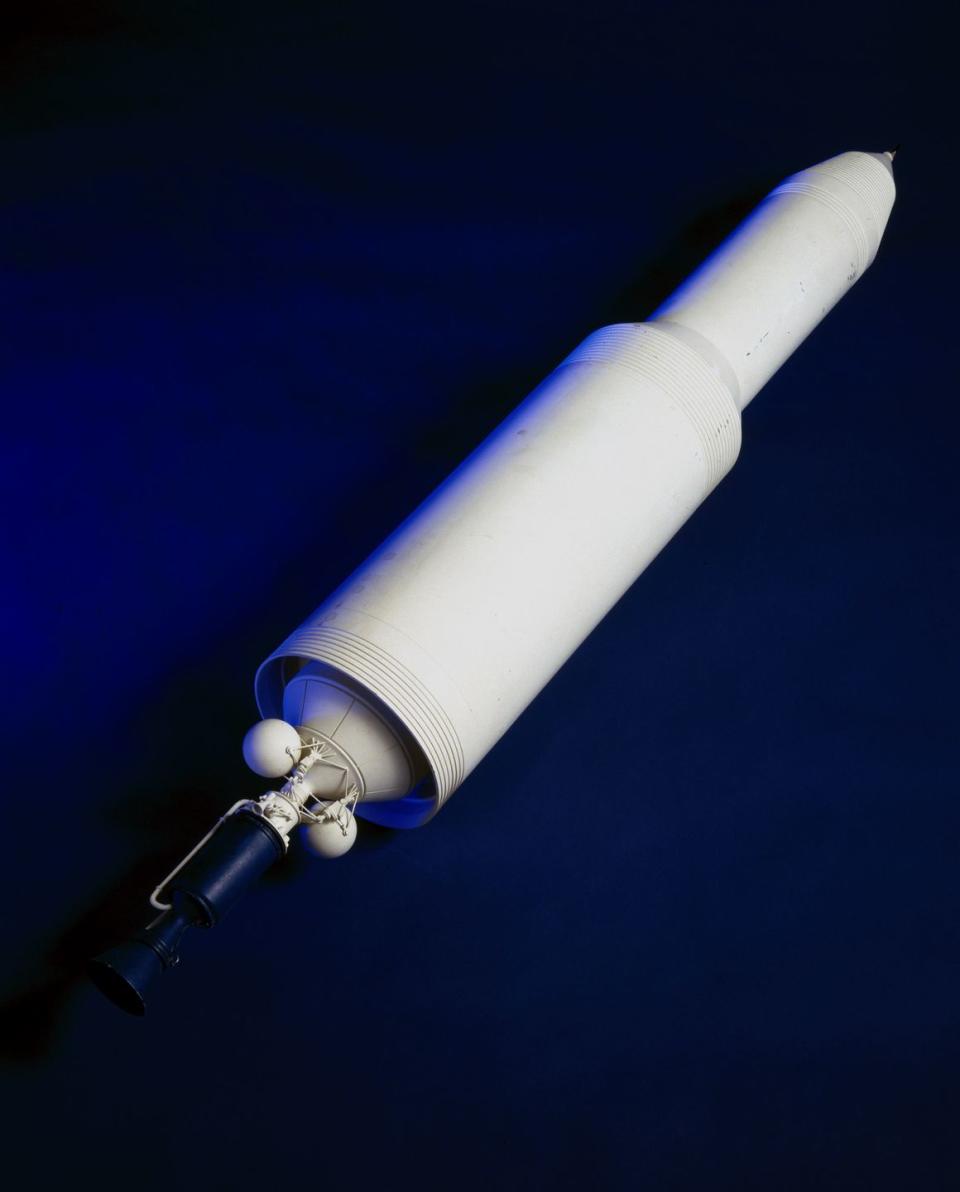The Pentagon Wants to Launch a Nuclear Thermal Rocket in 4 Years
The Defense Advanced Research Projects Agency (DARPA), the Department of Defense’s research and development arm, has announced a team will create the world’s first nuclear thermal propulsion (NTP) engine.
Nuclear thermal propulsion engines use nuclear fission to heat liquid hydrogen, squirting it out the rear of the rocket to create thrust.
The DRACO rocket would be used for transit between Earth and the moon, but it would also make for faster transit across the solar system.
The Defense Advanced Research Projects Agency (DARPA), the Pentagon’s research and development arm, is funding the construction of the world’s first nuclear thermal propulsion (NTP) system for spacecraft.
➡ You love nuclear. So do we. Let’s nerd out over nuclear together.
The system, which is called the Demonstration Rocket for Agile Cislunar Operations (DRACO), uses nuclear fission instead of traditional rocket fuel, making for a faster, more efficient space propulsion system. NASA sees NTP as the system that could take humans to Mars and beyond.
Earlier this week, DARPA announced it picked General Atomics, Blue Origin, and Lockheed Martin to build DRACO. The goal is to send DRACO into low-Earth orbit in 2025.
NTP is a concept that’s been around for a long time. The Department of Energy (DOE) explains it like this:
NTP systems work by pumping a liquid propellant, most likely hydrogen, through a reactor core. Uranium atoms split apart inside the core and release heat through fission. This physical process heats up the propellant and converts it to a gas, which is expanded through a nozzle to produce thrust.
NTP is twice as efficient as chemical rockets, owing to the fact that lighter gases—NTP designs typically use hydrogen—are easier to accelerate. Chemical rockets produce heavier water vapor as a waste byproduct.
Scientists first proposed NTP back in the 1940s. By the 1960s, NASA and the Atomic Energy Commission had investigated the use of NTP rockets with the Nuclear Engine for Rocket Vehicle Application (NERVA) program, but canceled the project before engineers could build a working rocket. Blame unease about launching a reactor with highly enriched uranium—or plutonium—into orbit, and a sense that chemical rockets were good enough for a slowing space program.

But now, NTP’s time has come.
Previously, the prospect of a nuclear-powered spacecraft exploding during takeoff and scattering dangerously radioactive materials across the U.S.—or worse, some other country—made nuclear propulsion untenable. However, modern designs rely on safer, low-enriched uranium, which poses less of an environmental risk should a chemical booster rocket carrying a NTP-equipped spacecraft suffer a catastrophic incident in the atmosphere.
The Pentagon is also pushing for spacecraft that can be repositioned in space faster than those equipped with chemical rockets. As the name implies, DARPA envisions DRACO operating primarily in cislunar space, or the area of space between Earth and the moon. NTP’s higher thrust-to-weight ratio will allow spacecraft to move faster across a broader expanse of space.
If DRACO is successful, its technology could be used in the civilian space sector. NASA believes NTP could cut total durations for Mars missions by half. DRACO would then join a long line of DARPA ideas, including the internet and RNA-based vaccines, that started life as military research and development projects and then provided immense benefits to the entire world.
🎥 Now Watch This:
You Might Also Like

